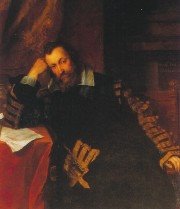
* * *
Heritage, birth, and coronation
During the 14th century reign of Robert II of Scotland, it had been confirmed that the Scottish Crown would only be inherited by males in the line of Robert's children—all sons—who were listed in that parliamentary Act. Females and female lines could inherit only after extinction of male lines.
Mary ascended to the throne because, with the death of James V, there were no remaining direct male descendants of Robert II of unquestionably legitimate origins (John Stewart, Duke of Albany, a direct descendant of Robert II, would probably have succeeded James V had he not died in 1536). c
Mary Stuart was the first member of the royal House of Stuart to use the Gallicised spelling Stuart, rather than the earlier Stewart. (Mary adopted the French spelling Stuart during her time in France, and she and her descendants continued to use it.)
Princess Mary Stuart was born at Linlithgow Palace, Linlithgow, West Lothian, on December 7 or December 8, 1542 to King James V of Scotland and his French wife, Marie de Guise. In Falkland Palace, Fife, her father heard of the birth and prophesied, "The devil go with it! It came with a lass, it will pass with a lass!" James truly believed that Mary's birth marked the end of the Stuarts' reign over Scotland. Instead, through Mary's son, it was the beginning of their reign over both the Kingdom of Scotland and the Kingdom of England.
The six-day-old Mary became Queen of Scotland when her father died at the age of thirty, probably from cholera, although his contemporaries believed his death to have been caused by grief over the Scots' loss to the English at the Battle of Solway Moss. James Hamilton, 2nd Earl of Arran was the next in line for the throne after Mary; he acted as regent for Mary until 1554, when he was succeeded by the Queen's mother, who continued as regent until her death in 1560.
In July 1543, when Mary was six months old, the Treaties of Greenwich promised Mary to be married to Edward, son of King Henry VIII of England in 1552, and for their heirs to inherit the Kingdoms of Scotland and England. Mary's mother was strongly opposed to the proposition, and she hid with Mary two months later in Stirling Castle, where preparations were made for Mary's coronation.
When Mary was only nine months old she was crowned Queen of Scotland in the Chapel Royal at Stirling Castle on September 9, 1543. Because the Queen was an infant and the ceremony unique, Mary's coronation was the talk of Europe. Mary was dressed in heavy regal robes in miniature. A crimson velvet mantle, with a train furred with ermine, was fastened around her tiny neck. A jeweled satin gown, with long hanging sleeves, enveloped the infant, who could sit up but not walk. She was carried by Lord Livingston in solemn procession to the Chapel Royal. Inside, Lord Livingston brought Mary forward to the altar, put her gently in the throne set up there, and stood by holding her to keep her from rolling off.
Quickly, Cardinal David Beaton put the Coronation Oath to her, which Lord Livingston answered for her. The Cardinal immediately unfastened Mary's heavy robes and began anointing her with the holy oil on her back, breast, and the palms of her hands. When the chilly air struck her, she began to cry. The Earl of Lennox (whose son Henry, Lord Darnley, later became Mary's 2nd husband) brought forward the Sceptre and placed it in her baby hand, and she grasped the heavy shaft. Then the Sword of State was presented by the Earl of Argyll, and the Cardinal performed the ceremony of girding the three-foot sword to the tiny body.
Then, the Earl of Arran carried the Crown. Holding it gently, Cardinal Beaton lowered it onto the child's head, where it rested on a circlet of velvet. The Cardinal steadied the crown and Lord Livingston held her body straight as the Earls of Lennox and Arran kissed her cheek in fealty, followed by the rest of the prelates and peers who knelt before her and, placing their hands on her crown, swore allegiance to her.
http://en.wikipedia.org/wiki/Mary_queen_of_scots
* * *

No comments:
Post a Comment